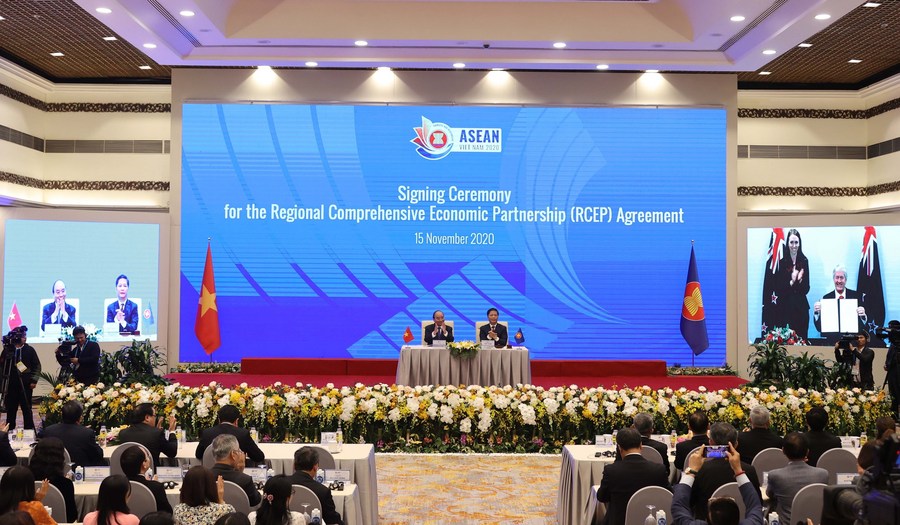A glimpse into world's largest trade deal

The signing ceremony of the Regional Comprehensive Economic Partnership (RCEP) agreement is held via video conference in Hanoi, Vietnam, Nov. 15, 2020. (VNA via Xinhua)
BEIJING, Dec. 31 (Xinhua) -- The Regional Comprehensive Economic Partnership (RCEP) agreement, the world's largest trade deal, will come into force Saturday. What is it? Why is it so important? How will it benefit its members and beyond? Some key questions about this new trade deal are answered below.
WHAT IS IT?
The RCEP agreement was signed among 15 participating countries in November 2020 after eight years of negotiation, which are ten ASEAN members and some of their major trading partners, namely China, Japan, the Republic of Korea, Australia, and New Zealand.
The deal will take effect Saturday initially in ten countries that have submitted instruments of ratification with the ASEAN Secretariat.
Under the agreement, more than 90 percent of merchandise trade between approved members will eventually be subject to zero tariffs. The countries within the bloc will slash economic and trade restrictions to facilitate flows of goods and factors, deepen the division of labor and cooperation, and improve production efficiency.
WHY IS IT IMPORTANT?
The 15 RCEP member states are home to 2.27 billion people, with a combined gross domestic product of 26 trillion U.S. dollars and total exports of 5.2 trillion U.S. dollars, which account for about 30 percent of the world's total, respectively.
The United Nations Conference on Trade and Development (UNCTAD) said the influence of the RCEP on international trade will be significant. "The economic size of the emerging bloc and its trade dynamism will make it a center of gravity for global trade."
China and Japan, the world's second- and third-largest economies, will see their first bilateral tariff cuts in the form of zero-tariff treatment under the RCEP, with taxes on 86 percent of products from Japan and 88 percent of products from China eventually down to zero.
ANY BENEFITS?
The RCEP will raise global national incomes in 2030 by an annual 186 billion U.S. dollars, noted a working paper of the Peterson Institute for International Economics.
With a massive population, diverse membership, and great potential, the free trade bloc will boost trade growth and facilitate global economic recovery.
The importance of the RCEP is accentuated amid the COVID-19 pandemic. Trade within agreements like the RCEP has been relatively more resilient against the pandemic-induced global trade downturn, UNCTAD research said.
WHAT IS CHINA'S ROLE?
China has played an active role in bolstering regional trade and growth and pushing forward the establishment of the RCEP.
The country took the lead in ratifying the RCEP agreement and is ready to implement it and fulfill a total of 701 binding obligations once the trade deal enters into force.
As the new agreement is about to kick in, China's pursuit of high-level opening-up will offer more opportunities for ASEAN members and the rest of the world. Twenty-two more service sectors will be opened, adding to the 100-sector commitment when China joined the World Trade Organization two decades ago. ■
Source:Xinhua Editor:jiwen